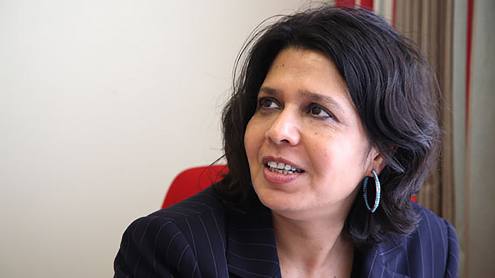As usual, the retail banking markets are talking a lot about both branches and mobile services. The question asked goes something like this: "If we invest in mobile internet, do we need branches?"
It reminds me of the conversation of a decade ago, when we all said: "If we invest in the internet, we should close branches." That was a mistake back then, so would it be a mistake to close branches today? Well, during these conversations, I realised some things.
Take branches. There appears to be an evolution of branch usage from underbanked economies through emerging economies to developed economies.
In underbanked economies, the issue is often a lack of infrastructure and investment combined with low income and prospects. Banks do not invest in branches as it would only be profitable in major urban areas where there is population density, wealth and work. As a result, these countries have had few banking prospects and little access, but this is changing due to the introduction of mobile wireless infrastructures. Even so, these communities will remain underbanked as full bank services have limited availability in rural communities.
In emerging economies, however, massive urbanisation is creating new wealth and new communities. In China, the ratio of rural population to urban population has changed from 74:26 in 1990 to 53.4:46.6 in 2009. And with such change comes branch banking. China has seen a revolution in banking during this urbanisation process, and today's Chinese banks hardly reflect those of two decades ago in service or style. In emerging markets, mobile banking services range from simple to complex, and the mobile channel is used for everything from basic payments to full-service banking, depending on which consumer segment the bank serves.
Then you look at developed economies, and the bank branch is already built into their banking model from the past. The branch may be an asset or a liability, but the critical issue is that new channels and technologies - the internet and mobile internet specifically - are offering additional and alternative ways for these banks to reach their consumers.
This also varies by culture and language. For example, Spanish customers prefer bank branch access much more than UK customers, who would rather telephone their bank than visit a branch. So it is not possible to generalise too much about these services.
The five ages of mobile banking
Nevertheless, and this was my other realisation, you can also see big changes in mobile banking. I have seen five phases of mobile channel access and usage. The first involved basic payment-processing and transaction services using SMS text messaging.
The second phase encompassed additional bank account services based on Wireless Application Protocol. Third-generation mobile bank services offered a more multimedia-rich interaction, based on smartphones. This was limited by the fact that companies had to design applications ('apps') for each phone operating system and, in some cases, for each model of phone.
Fourth-generation mobile technology is where we are today, with 'killer apps' offered by platforms such as iPhones and Androids. The beauty of this is that we now have not only phones that can offer idiot-proof bank services, but also apps that can be developed and deployed for mobile internet. The design of apps is no longer for a specific phone model or operating system, but for easy access to multimedia-rich banking services using the Open Application Programming Interface.
Finally, there is a next-generation mobile service on the horizon: the chip-neutral device. Today, we have EMV chips for smartcards, SIM chips for phones and radio-frequency identification chips for contactless services. This will all change in the next few years as Visa and MasterCard, the GSM Association (which represents mobile companies) and mobile operators themselves work together to develop chip-enabled services that are device-neutral. You could stick your wireless payment chip into any gadget, tool or technology you want: a telephone, a watch, a television, an iPad, a laptop or a pair of sunglasses. Anything and everything could become a wirelessly communicating, interactive payments device.
Roll on the next generation.
Chris Skinner is an independent financial commentator and chairman of London-based The Financial Services Club (www.thefinanser.com)







